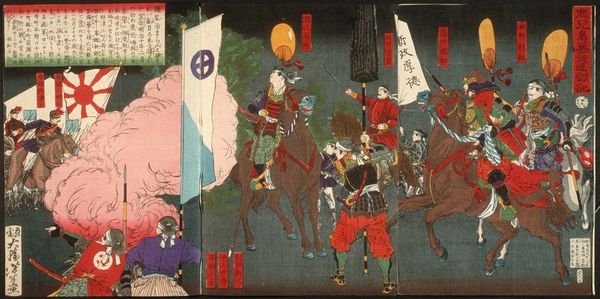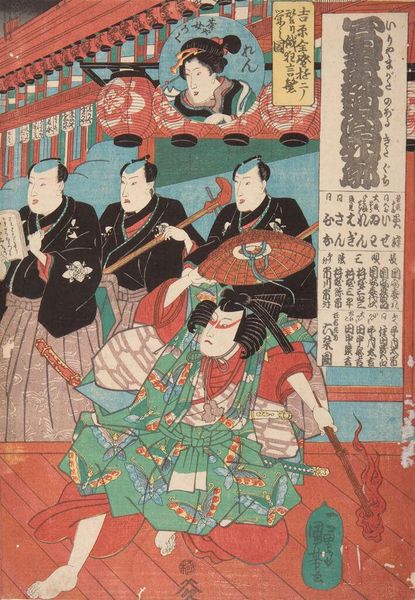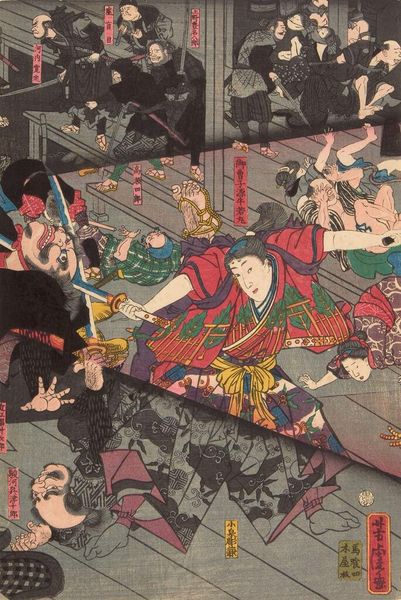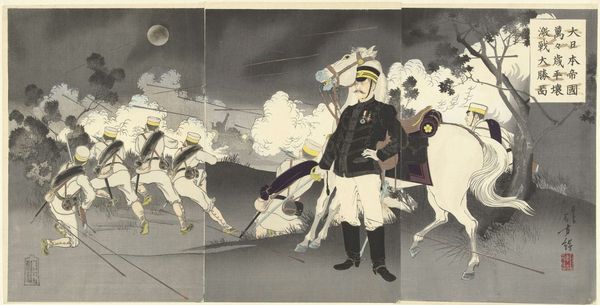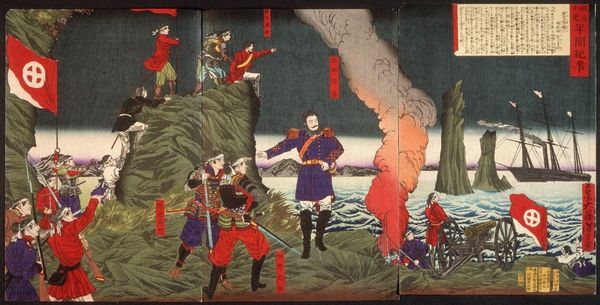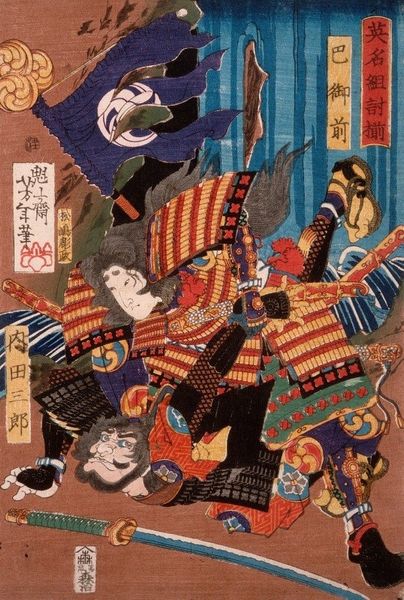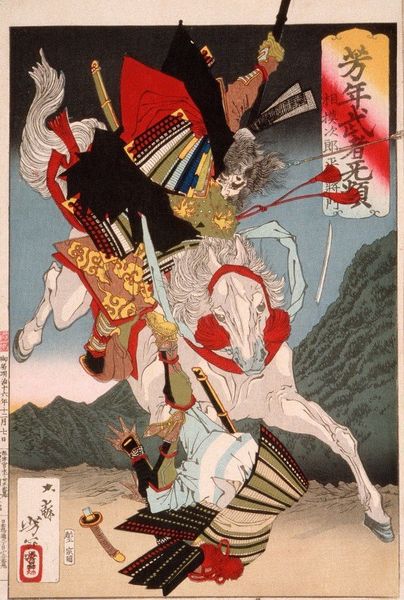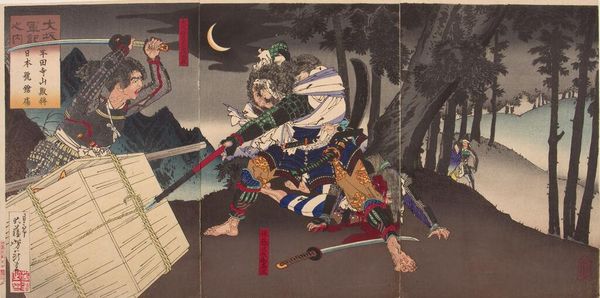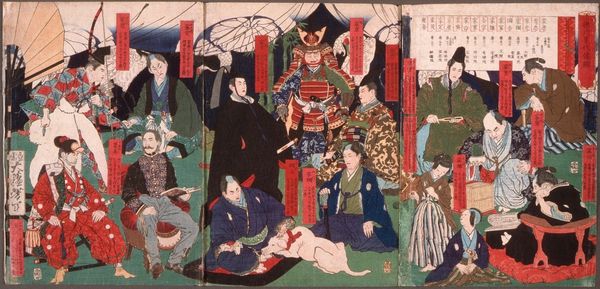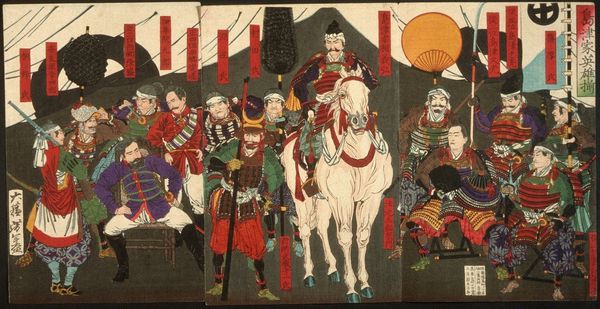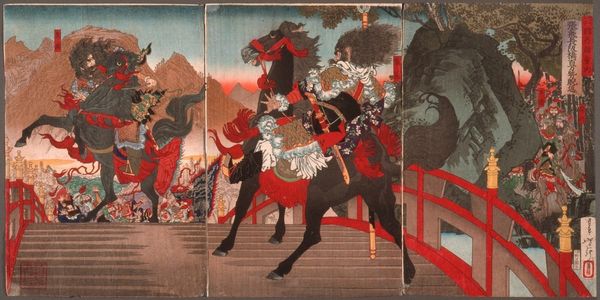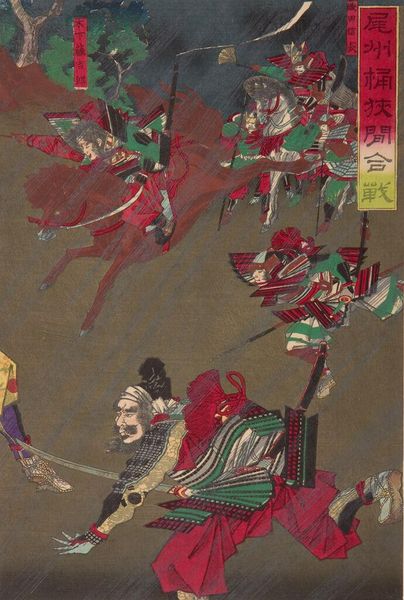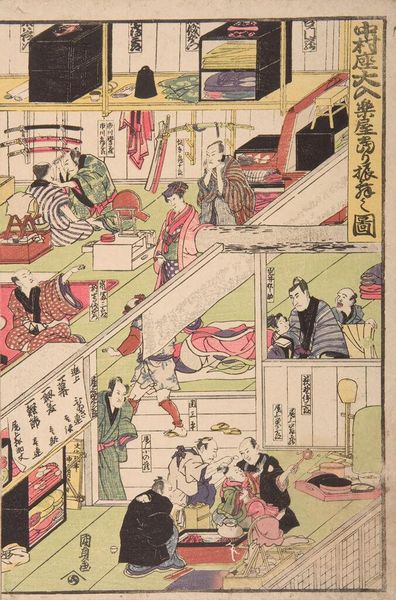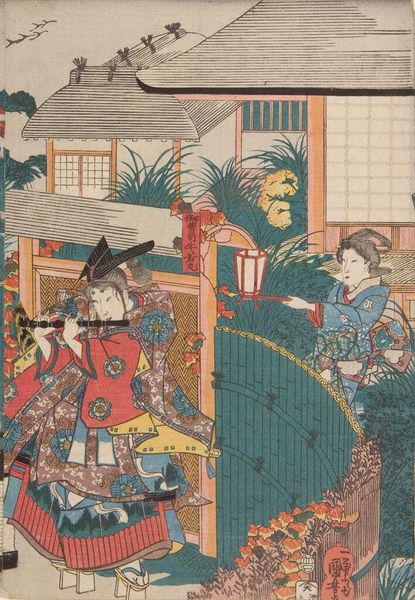
Copyright: Public Domain: Artvee
Curator: Today, we're looking at "The Truth about Korea," a woodblock print created by Kobayashi Kiyochika in 1882. It depicts, with striking division, the unfolding events surrounding tensions in Korea at the time. Editor: The composition is arresting. There's this clear dichotomy between the clean, organized ranks of Japanese soldiers and a chaotic scene of warfare. It feels almost propagandistic in its stark contrast. Curator: It is absolutely propagandistic! The artist used the ukiyo-e tradition, specifically woodblock prints, as a means to portray and, in some ways, construct a particular narrative of the events in Korea. It's crucial to recognize these prints were circulated widely as news. Consider the impact of such readily available, yet mediated, depictions on public perception. Editor: True, and what I find compelling is how Kiyochika employs Western-style perspective – seen in the receding lines of soldiers and the ship in the background – while adhering to traditional Japanese aesthetics. There is almost a blending of two worlds on display. Look how the regimented vertical lines created by the flag poles add to a sense of formalized aggression on the left, and bloody, jagged destruction on the right. Curator: Yes, that visual contrast also reinforces the narrative of a 'civilized' Japan bringing order to a supposedly chaotic and 'backward' Korea. The presence of that naval vessel also underscores Japan's industrial and military might in the late 19th century. Editor: From a purely visual standpoint, the dynamism of the right panel, all diagonals and explosions, clashes violently with the staid formality of the left. The dramatic, expressive figures on the battlefield certainly pull focus. Curator: And we shouldn’t disregard that this work serves as an important record of how Japan modernized its military, adopting Western uniforms and tactics. Kiyochika was very deliberate in showcasing the output of those military reforms. The very act of representing conflict became part of Japan's imperial agenda. Editor: Well, regardless of the intent, the emotional resonance remains powerful, making the print an enduring work of art, even if its narrative needs critical interrogation. Curator: Precisely. Examining works like these encourages us to consider how art becomes entwined with socio-political narratives and serves ideological purposes, then and now.
Comments
No comments
Be the first to comment and join the conversation on the ultimate creative platform.
